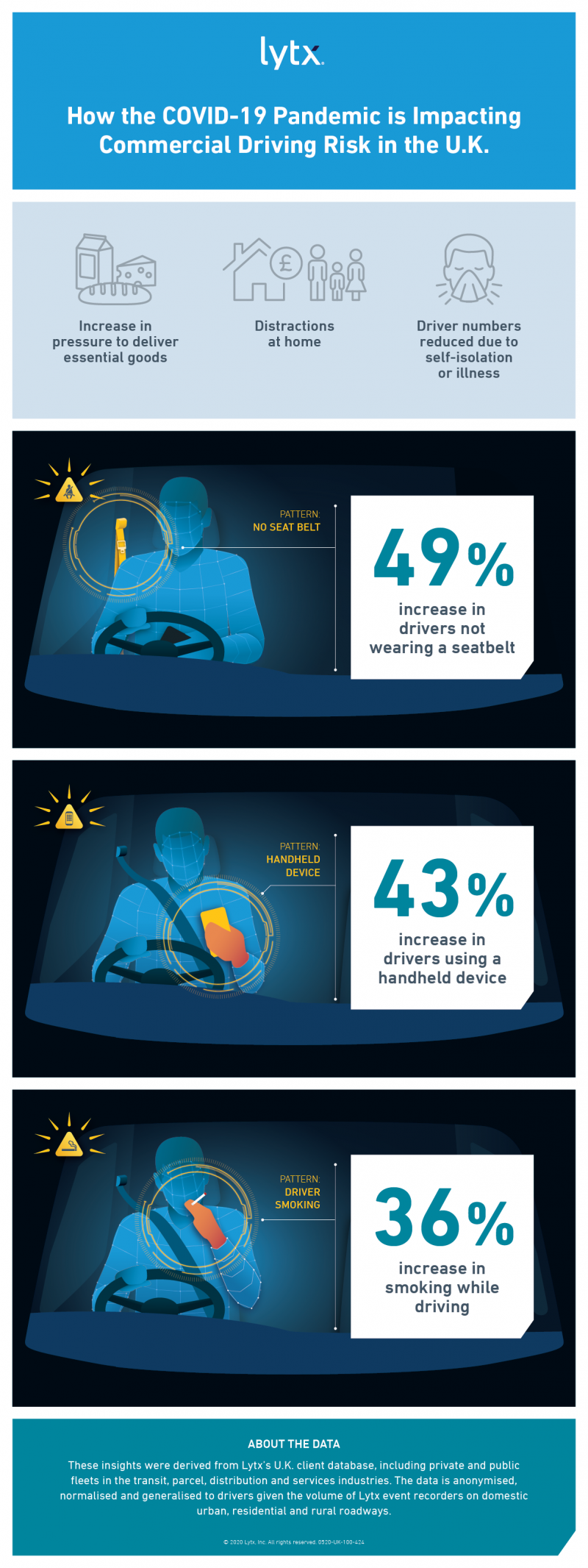
MILTON KEYNES — Commercial drivers in the U.K. continue to show signs of strain as a result of the continuing COVID-19 pandemic, according to new data from fleet video telematics provider, Lytx®.
Derived from Lytx’s U.K. driving-risk database, the data* provides operators with information about current driving trends – including driver behaviour – in order to help them keep their fleets and drivers safe.
While the level of risky driving behaviours dropped dramatically in the first three weeks following lockdown, the second three weeks saw a definitive increase in certain behaviours.
In the second three weeks of lockdown, from 27th April – 31st May, the following changes in driving risk occurred:
- 49% increase in drivers not wearing a seatbelt
- 43% increase in drivers using a handheld device
- 36% increase in smoking while driving
Damian Penney, Vice President of Lytx Europe said: ‘‘It’s important to note that risky behaviour levels are still lower than they were during the same period in 2019, but they are rapidly returning to pre-Covid levels.’’
‘‘While drivers will often experience seasonal peaks, internet orders and home deliveries have increased as people comply with the lockdown. This, coupled with reduced driver numbers due to self-isolation or illness, has resulted in increased pressure for those out on the road. Unsurprisingly, the data suggests that this added strain may have caused a change in focus amongst some drivers.’’
Damian Penney goes on to explain how companies can address the issue: ‘‘The data enables managers and drivers to understand exactly what is happening in and out of the cab. Usually in these situations, face-to-face coaching would take place to address any risky behaviours and to reward safe driving. In the current situation, we’re seeing many of our clients turn to remote coaching as an alternative way to ensure that personalised conversations between managers and drivers are still taking place in spite of the challenging circumstances.
‘‘Finally, these insights can be utilised by fleet managers to minimise the possibility of risk as they plan for the ‘return to normal’ and look to get the entire fleet back up and running. Whether that’s re-emphasising their current safety programme, or adding a safety solution where one doesn’t exist currently, our data can help fleet managers make informed decisions around training, as well as increased support for drivers as they get back behind the wheel.’’



